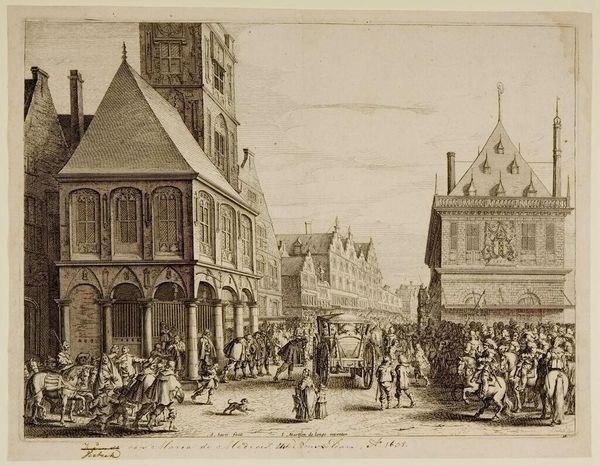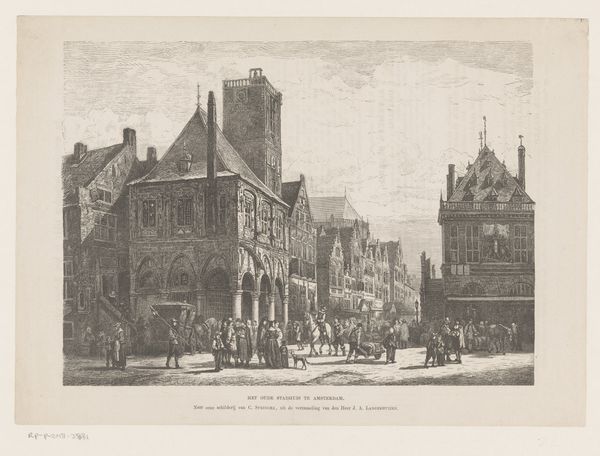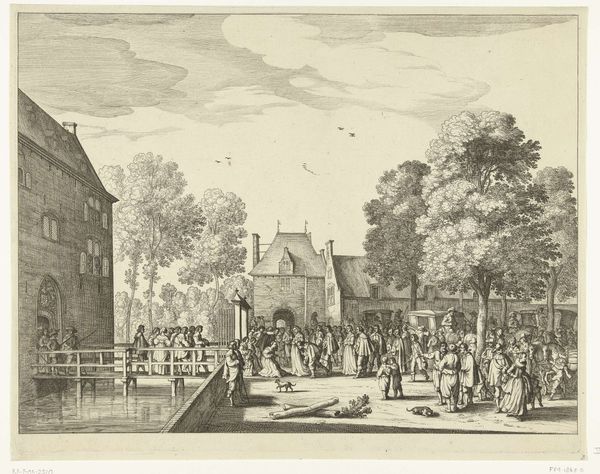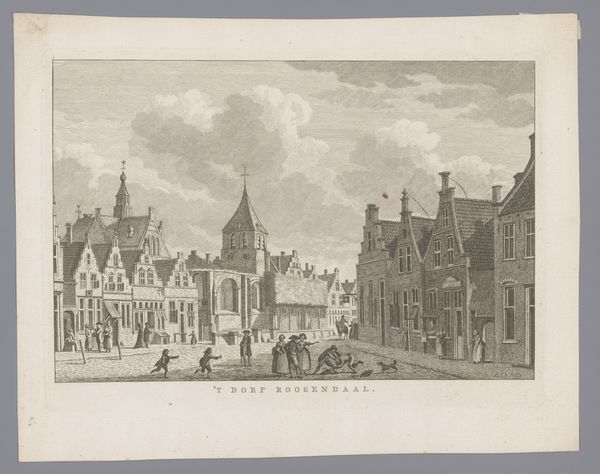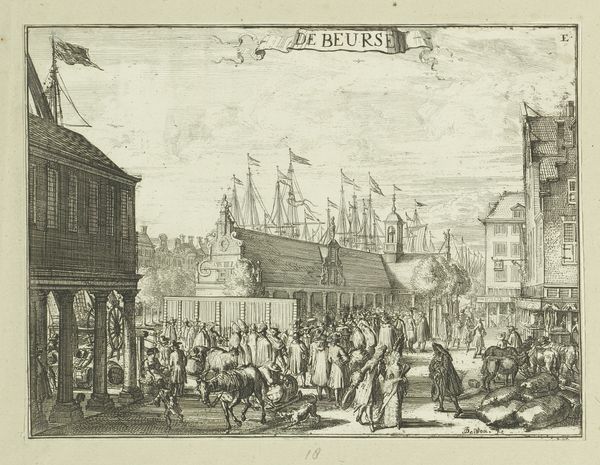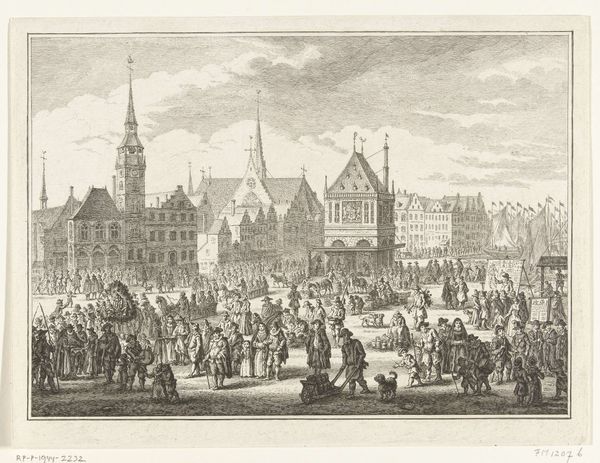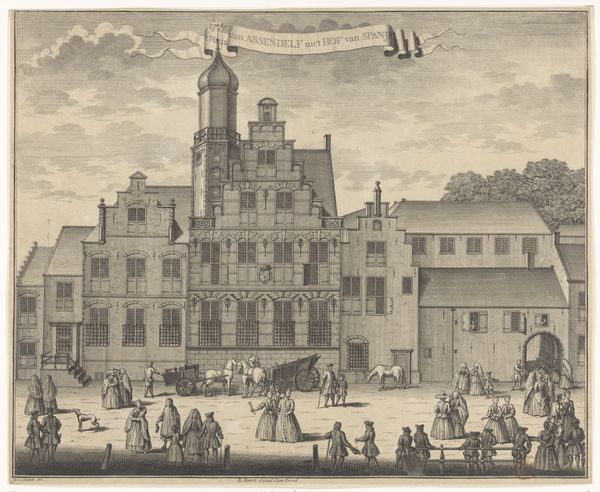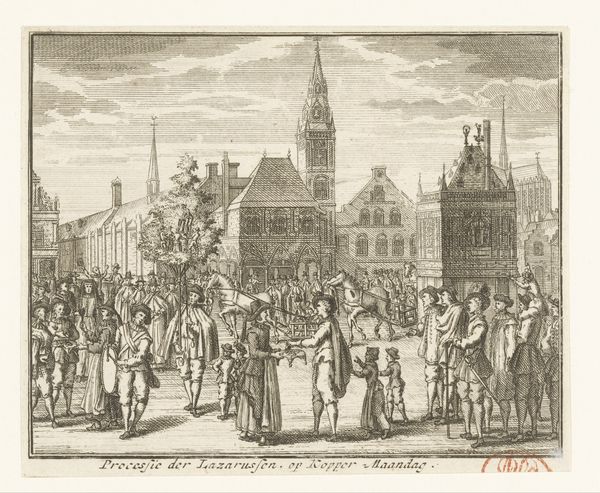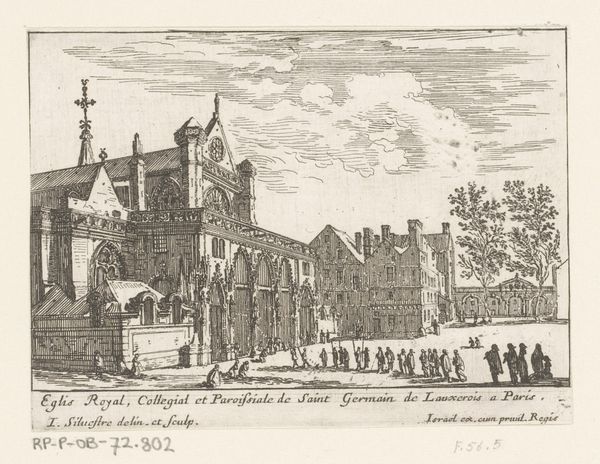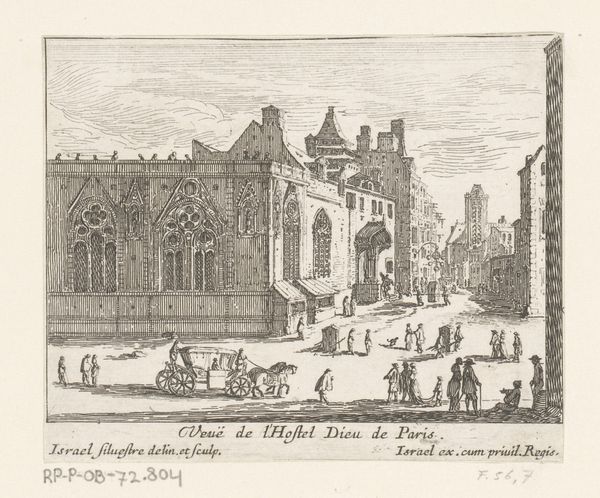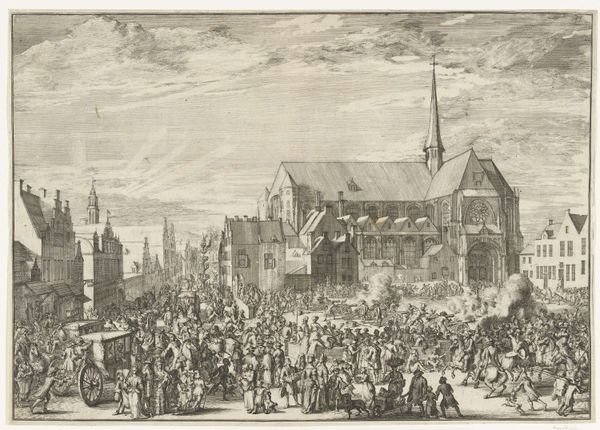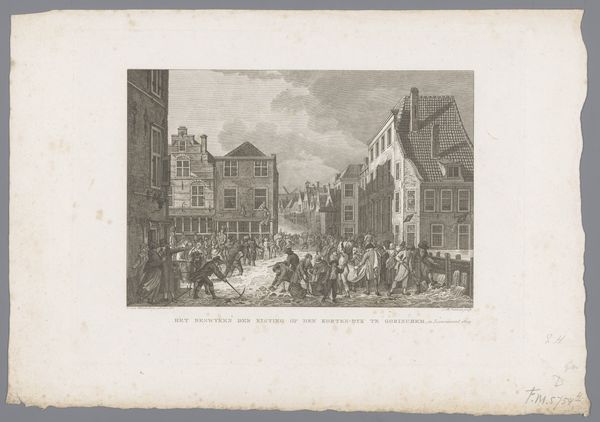
City magistrates taking leave of Marie de Medici before the town hall, from Caspar Barlaeus, "Medicea Hospes" 1638
0:00
0:00
drawing, print, engraving
#
drawing
#
baroque
#
dutch-golden-age
# print
#
cityscape
#
genre-painting
#
engraving
Dimensions: Sheet: 11 9/16 × 15 1/4 in. (29.4 × 38.8 cm) Plate: 11 1/8 × 15 1/16 in. (28.3 × 38.3 cm)
Copyright: Public Domain
Curator: Salomon Savery created this engraving in 1638. It depicts "City magistrates taking leave of Marie de Medici before the town hall," illustrating a scene from Caspar Barlaeus's "Medicea Hospes." Editor: It feels remarkably composed given the busyness of the scene. Look at the depth and how the architecture seems to watch over the crowd. I wonder, what kind of narrative is being shaped? Curator: Well, the print immortalizes a specific historical moment. Marie de Medici's visit to Amsterdam was a significant political event, and this engraving served as a visual record of the city magistrates' respect and allegiance towards her. It emphasizes the importance of ceremony and diplomatic relations in the Dutch Golden Age. Editor: True, but I also read it as a statement of power. Placing Marie de Medici in the heart of Amsterdam and documenting this farewell, Savery participates in creating a symbol of the city's connection to European royalty. How do you view the crowd in all this? Are they just witnesses? Curator: The crowd plays a vital role in establishing scale and emphasizes the public nature of the event. Note also that the artwork highlights social hierarchy by detailing the magistrates and the elites closest to Marie de Medici's carriage while implying the existence of a general populace observing from a distance. The composition directs our gaze towards the spectacle but also implicitly reminds us of the structures that upheld those spectacles. Editor: So, it's about constructed images and social order. But looking closer, I’m struck by the ordinary—the children playing, a dog darting through the scene. Does this everydayness serve a function beyond simple documentation? Curator: Absolutely, that tension between the grandeur of the occasion and those small, almost overlooked details provide a kind of authenticity. It implies that despite the performance of power, life in Amsterdam continued. Those small genre-painting elements add a sense of liveliness to a political portrayal. Editor: So, the print is a layered construction of power, history, and a dash of the everyday. Thinking about how public images work today, I wonder what Savery might make of contemporary society. Curator: A fascinating thought experiment! I’m certain that analyzing historical imagery and statecraft helps to reflect upon more contemporary iterations of art and its relationship to civic authority. Editor: Agreed. By looking closely at art like this engraving, we understand how visual imagery plays a role in defining our present-day understanding of politics and identity.
Comments
No comments
Be the first to comment and join the conversation on the ultimate creative platform.
